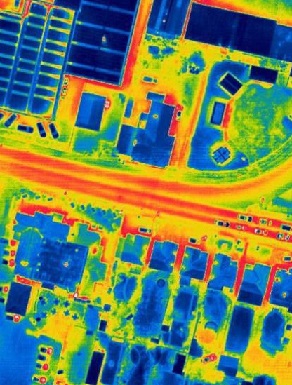Office model to take the heat off commercial bills
 A new system developed by University of Adelaide engineers can model and predict temperatures within a building, promising significant reductions in commercial energy use.
A new system developed by University of Adelaide engineers can model and predict temperatures within a building, promising significant reductions in commercial energy use.
Researchers have developed an intelligent model using public weather forecast information and data from existing building management systems. It can stay one step ahead of the building's temperature changes and adjust heating and cooling supply accordingly.
Experiments so far have led to 10% energy savings and above.
“Any building environment is subject to changes in the outside world,” says Hao Huang, a mechanical engineering PhD candidate.
“In air-conditioned commercial buildings, the heating, cooling and ventilation systems respond to temperature changes within the building, passively.
“Our model can be used as a pre-emptive measure to keep ahead of those temperature changes, making adjustments in the heating and cooling supply to keep the building at a comfortable temperature without wasting energy in temperature overshoots.”
Mr Huang and supervisor Dr Lei Chen, Senior Lecturer in the School of Mechanical Engineering have worked with Adelaide Airport Limited (AAL) to conduct experiments in a three-year clean energy partnership between the two.
“We've established how to predict temperature changes and make corresponding control decisions within a building,” says Dr Chen.
“Our next step is to integrate the algorithm that Hao has developed into existing commercially available air conditioning control systems.
“The potential is enormous - for both individual organisations in terms of cost reductions through savings in energy use, and at a global level.
“If this system is adapted in buildings in cities around the world, the decreased energy use could make a large difference to the total production of greenhouse gases,” Dr Chen explained.







 Print
Print